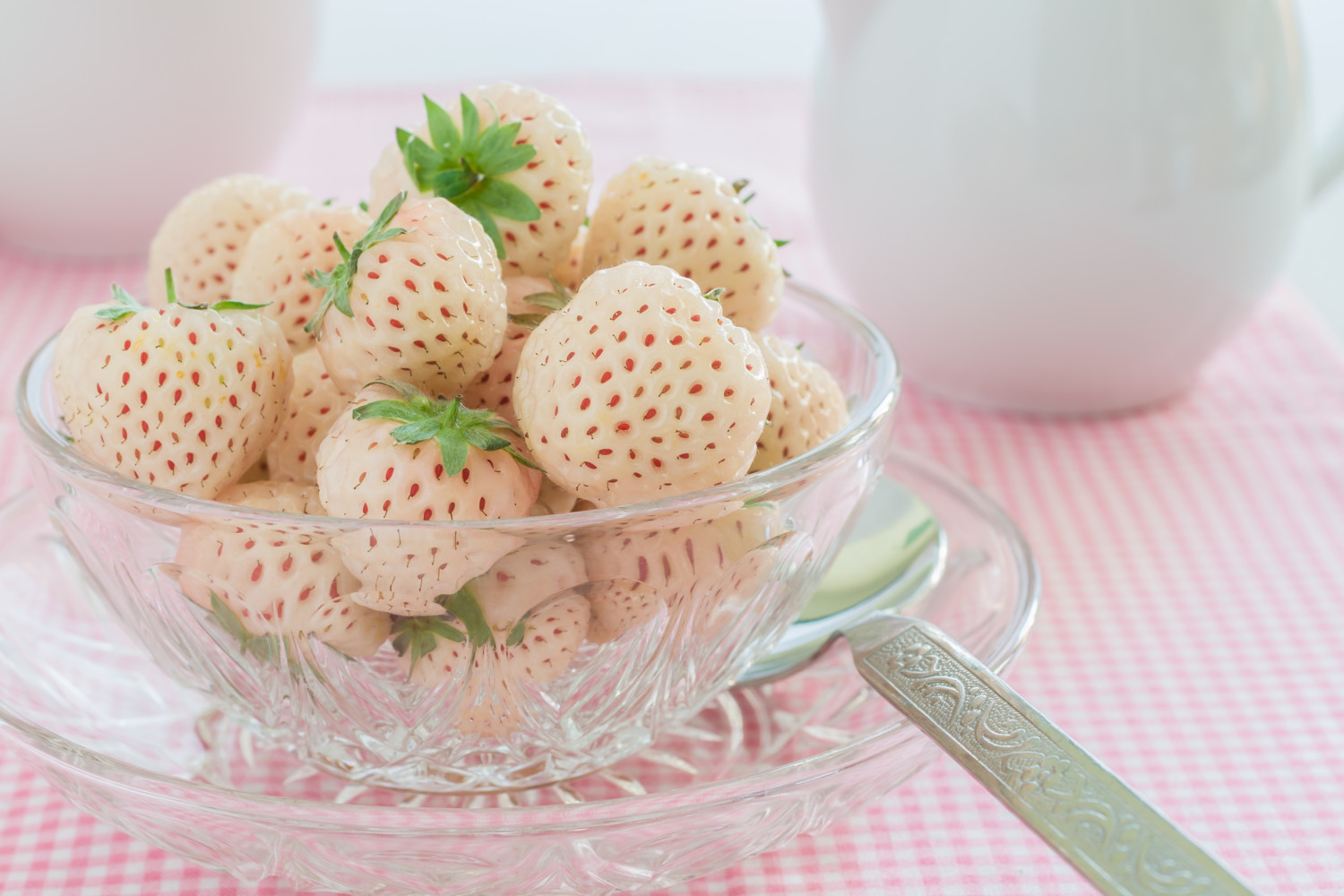The products and services mentioned below were selected independent of sales and advertising. However, Simplemost may receive a small commission from the purchase of any products or services through an affiliate link to the retailer's website.
You’ve eaten strawberries. You know pineapples. Ever heard of hula pineberries? They’re not actually a hybrid of the two fruits, but they look like pinkish-white strawberries and have a citrus taste similar to pineapples.
Huh?! While pineberries sound far out, they’re actually completely natural. Far from being made in a lab, the hula berry is grown when red strawberries native to North America (Fragaria virginiana) and white strawberries native to Chile (Fragaria chiloensis) are cross-pollinated. They’re also known as alpine berries or white strawberries.
Where To Get Pineberries
Pineberries are not super widely available, so you may have difficulty finding them at your local grocery store. Pineberries were first introduced commercially in the United States around 2012. Florida-based Wish Farms grows pineberries, which they call Pink-A-Boo Pineberries, and their products are sold at a number of national retailers, including Aldi, Costco, Food Lion, Kroger, Mariano’s, Jewel-Osco, Publix, Sam’s Club, Walmart and Target.
You may also find them at farmers’ markets or specialty food stores. They’re sold seasonally usually in the summer months between April and June.

Another option is to grow them yourself. You can purchase the starter plants from online retailers like Etsy, Amazon or Walmart; these can be pricey, but the seeds don’t always breed true. Pineberries are an everbearing fruit, which means you can have a continual supply.
If you grow outdoors, be sure to mulch the crowns with straw or grass clippings to protect them in the winter, and this can also help with super-hot temperatures in the summer. The trick with growing pineberries, according to experts, is that they should be grown with regular strawberries nearby so they can cross-pollinate.
You can grow them indoors as well, but make sure that you have sufficient drainage as root and crown rot can occur if the plants are too wet. They will grow best at about 70 degrees with low humidity and need at least six hours of direct sun or between 8-10 hours of bright, indirect daylight per day.

How To Eat Pineberries
Pineberries make for a delicious snack all on their own. They’d also be great in smoothies or in salads. Have them with your morning yogurt or cereal, or dip them in chocolate for a decadent dessert. Check out this recipe from Victoria Haneever for a spinach, goat cheese and pineberry salad.
“Because these strawberries are so unique and have such visual appeal, I would use them raw, where you can highlight their beauty,” said Erin Merhar, ThePioneerWoman.com’s food director. “They would make a fun addition to any fruit salad, or topping for waffles and pancakes. “You can also mix them, half and half, with regular red strawberries to make a head-turning garnish on top a dessert like chocolate pudding or key lime pie cheesecake bars. Or, substitute some of these hula berries for regular strawberries in our classic strawberry pie.”

Pineberry Health Benefits
Not only are pineberries pretty and delicious, but they’re good for you, too. Pineberries are a good source of vitamins A and C as well as folate. Vitamin A is protective against cancer and plays a role in eye health, bone health and immune system function. Vitamin C is also great for your immune system and is protective against cardiovascular disease. Folate is important in red blood cell formation and is very crucial during early pregnancy to reduce birth defects of both the brain and spine.
This story originally appeared on Simplemost. Checkout Simplemost for additional stories.


